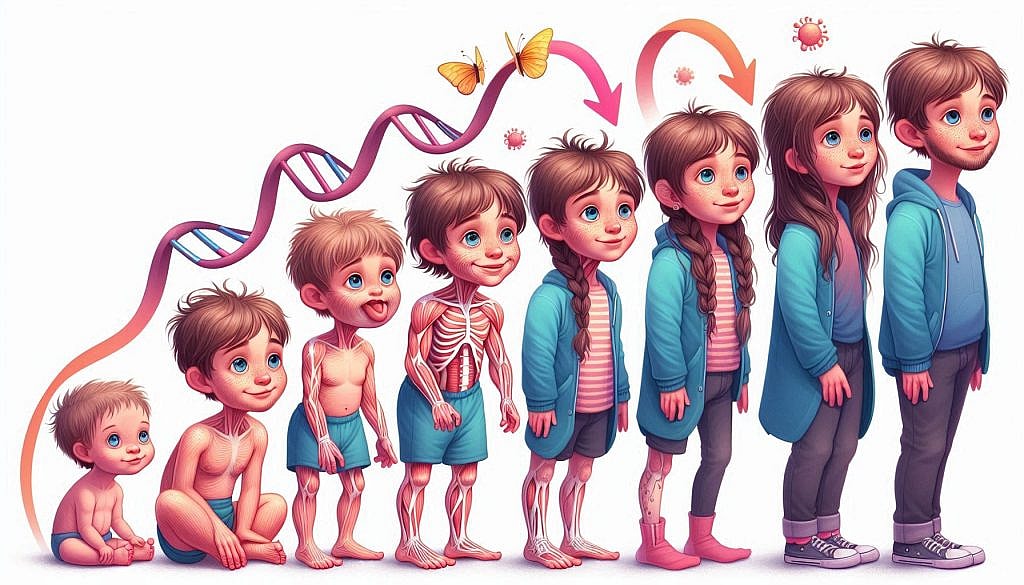Prader-Willi Syndrome: Causes, Symptoms, and Treatment Options
Learn about Prader-Willi syndrome, a rare genetic disorder affecting growth, behavior, and appetite. Discover symptoms, causes, and management strategies.
1. What is Prader-Willi Syndrome?
Prader-Willi syndrome (PWS) is a rare genetic disorder affecting approximately 1 in 10,000–30,000 people worldwide. First identified in the 1950s by Swiss physicians Andrea Prader and Heinrich Willi, PWS is characterized by:

2. Symptoms of Prader-Willi Syndrome
Infancy and Early Childhood
Childhood to Adulthood

3. Causes and Risk Factors
PWS is caused by genetic changes on chromosome 15, specifically in the “Prader-Willi critical region” (PWCR). These changes can occur in three ways:
PWS typically occurs randomly during conception and is not inherited. There are no specific risk factors, but genetic counseling is recommended for families with a history of PWS.
4. Diagnosis and Testing
Early diagnosis is crucial for implementing appropriate support strategies. PWS is diagnosed through:
Genetic testing can diagnose nearly all cases of PWS in infants.
5. Treatment and Management
While there’s no cure for PWS, treatment focuses on managing symptoms.

6. Long-term Outlook
The median age of death for people with PWS is 30 years, but life expectancy can range from 1 month to 58 years. With advances in care, the mortality rate has decreased by about 1.25% per year.Adults with PWS may require:
7. Frequently Asked Questions
Q: What is the life expectancy of a person with Prader-Willi syndrome?
A: The median age of death is 30 years, but life expectancy ranges from 1 month to 58 years.
Q: What are the two main symptoms of Prader-Willi syndrome?
The primary symptoms are increased appetite, weight gain and difficulties with muscle control/weakness.
Q: What is the physical appearance of a child with Prader-Willi syndrome?
Common characteristics include almond-shaped eyes, narrow forehead, thin upper lip, and small hands and feet.
If you suspect your child may have Prader-Willi syndrome, consult with a healthcare professional for proper diagnosis and treatment options.








Thank you for providing such detailed information on Prader-Willi Syndrome. It’s crucial to raise awareness about this rare genetic disorder. Understanding its causes, recognizing the symptoms early, and exploring the available treatment options can significantly improve the quality of life for individuals affected by PWS. I especially appreciate the emphasis on a multidisciplinary approach for management. Great post!
This is a very informative post! Prader-Willi Syndrome is indeed a complex and challenging condition, and it’s crucial to raise awareness about it. Understanding the genetic causes, recognizing the symptoms early, and knowing the available treatment options can make a significant difference in the lives of those affected and their families. The information provided here is invaluable for anyone seeking to learn more about PWS. Thank you for shedding light on this important topic!
This is an incredibly informative post on Prader-Willi Syndrome! It’s great to see comprehensive coverage on the causes, symptoms, and treatment options available for this rare genetic disorder. Raising awareness about PWS is so important, and detailed articles like this can be a valuable resource for both those affected and their families. Thank you for shedding light on such a critical topic!
Thank you for this comprehensive overview of Prader-Willi Syndrome. Understanding the genetic cause and the range of symptoms can really help increase awareness and support for individuals and families affected by this condition. The treatment options you’ve outlined provide valuable information for managing the syndrome effectively. It’s crucial to continue advocating for research and resources to improve the quality of life for those living with Prader-Willi Syndrome.
As a parent of a child with Prader-Willi Syndrome, I appreciate this detailed and comprehensive overview. Understanding the genetic causes and the spectrum of symptoms really helps in advocating for proper care. It’s heartening to see the advancements in treatment options and the emphasis on early intervention. Thank you for shedding light on this often misunderstood condition.